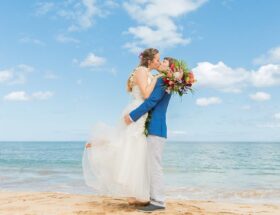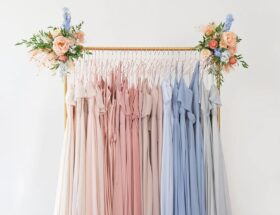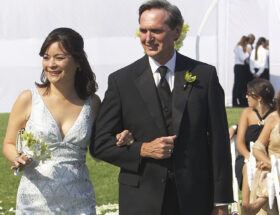Selecting the perfect wedding dress is one of the most exciting and important aspects of wedding planning. Finding the right size is not just about fit; it’s about feeling confident and beautiful on your special day. Wedding dress sizes can differ from regular clothing sizes, adding a layer of complexity to the process. Here’s the ultimate guide to understanding and navigating wedding dress sizes.
1. Bridal Sizing vs. Street Sizing
It’s essential to recognize that wedding dress sizing is often different from everyday clothing sizes. Bridal sizing typically runs smaller, meaning you might need a larger size in unique wedding dresses than in your regular clothes. Don’t be alarmed if the number seems higher than expected—it’s all about finding the best fit for your body.
2. Get Professionally Measured
The key to finding the right wedding dress size is to get professionally measured. Bridal boutiques have experienced consultants who take precise measurements, helping you determine the most accurate size for your body. Keep in mind that wedding dress sizing can vary by designer, so the measurements are crucial for choosing the appropriate size in the particular brand you’re interested in.
3. Bust, Waist, and Hip Measurements
Wedding dress sizing typically considers three main measurements: bust, waist, and hips. These measurements guide the selection of the size that will best accommodate your body shape. Remember that alterations can always be made to achieve a perfect fit, so prioritize the size that corresponds to your largest measurement.

4. Consider the Silhouette
Different wedding dress silhouettes have unique sizing requirements. A ballgown may require a different size than a sheath or a mermaid dress. When trying on dresses, consider the silhouette you have in mind and select the size that accommodates the most critical part of the dress—usually the hips or bust.
5. The Importance of Alterations
Alterations are a standard part of the wedding dress process. No matter how accurately you’re measured, alterations are often necessary to achieve a flawless fit. A skilled seamstress can make adjustments to ensure that the dress hugs your body in all the right places, creating a customized look that enhances your beauty.
6. Focus on How It Feels
Ultimately, the goal is to feel comfortable and confident in your chosen dress. While it’s essential to pay attention to sizing charts and measurements, don’t forget to trust your instincts. If you find a dress that makes you feel like a bride, don’t be discouraged by the size on the tag. What matters most is how the dress fits your body and how it makes you feel.
7. Be Open to Trying Different Sizes
Don’t fixate on a specific size; be open to trying on dresses in a range of sizes. Wedding dress sizing is a guideline, not a rule, and different designs can fit differently even within the same brand. By staying flexible and open-minded, you’ll have a better chance of finding the dress that flatters your body and fulfills your bridal dreams.
In conclusion, wedding dress sizes can be confusing, but with the right approach, you can navigate this process smoothly. Remember that it’s all about finding the dress that makes you feel beautiful and confident as you walk down the aisle. By getting professionally measured, considering your body measurements and silhouette, focusing on how the dress feels, and being open to alterations, you’ll be well on your way to finding the perfect wedding dress size for your big day.










